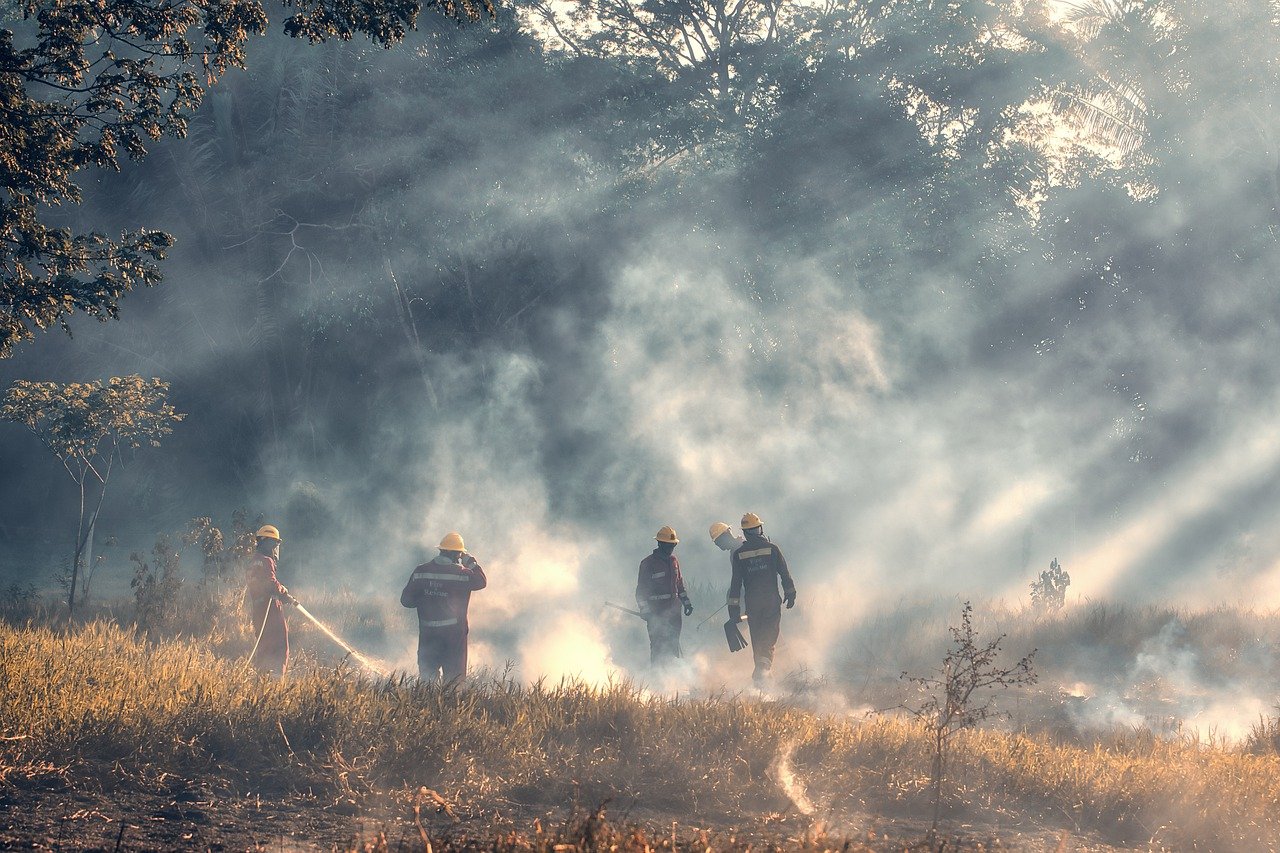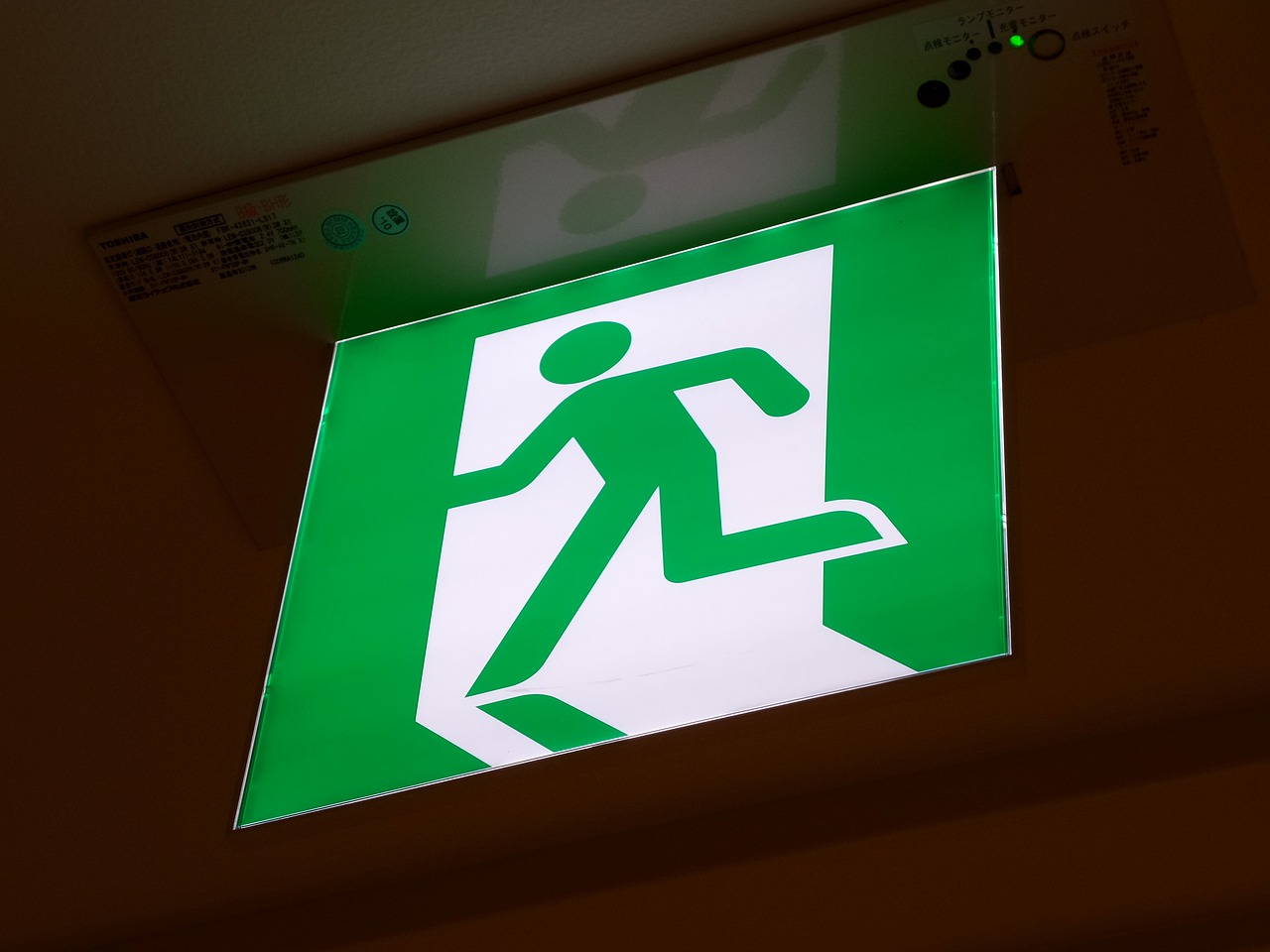The Importance of Early Warning Systems in Emergencies
In an unpredictable world where natural disasters can strike without warning, the significance of Early Warning Systems (EWS) cannot be overstated. These systems serve as the frontline defense against the chaos that ensues during emergencies, providing crucial information that can save lives and minimize damage. Imagine a storm brewing on the horizon; without an early warning, communities may remain oblivious to the impending danger, leading to catastrophic consequences. Early warning systems act like a lighthouse in a storm, guiding individuals and communities to safety.
At their core, early warning systems are designed to detect potential hazards and communicate these threats effectively. They encompass a range of technologies and methodologies aimed at ensuring that information flows seamlessly from data collection points to the people who need it most. The effectiveness of these systems relies on their ability to provide timely, accurate, and actionable information. When implemented correctly, they empower communities to take proactive measures, thus reducing the impact of disasters.
One of the most compelling aspects of early warning systems is their ability to foster community resilience. When people are aware of potential risks and are educated on how to respond, they are far less likely to panic in the face of an emergency. This preparedness can make all the difference in a crisis. For instance, communities that regularly participate in training and drills are often better equipped to handle disasters, as they know what to expect and how to react. These systems not only provide warnings but also build a culture of safety and readiness.
Moreover, the integration of technology in early warning systems has revolutionized how we approach disaster management. With advancements such as satellite imagery, real-time data analytics, and even artificial intelligence, the accuracy and speed of warnings have improved dramatically. These technologies allow for a more nuanced understanding of emerging threats, enabling authorities to issue alerts that are both timely and relevant. In essence, technology transforms raw data into life-saving information, bridging the gap between potential disaster and informed action.
Yet, despite the clear benefits, the journey to establishing effective early warning systems is fraught with challenges. Funding constraints and technological barriers can hinder development, especially in underserved areas where resources are limited. Additionally, ongoing community engagement is crucial; without the involvement of local populations, even the most advanced systems can fall short. Therefore, it is essential for governments and organizations to prioritize investment in these systems, ensuring that they are not only established but also maintained and improved over time.
In conclusion, early warning systems are not just tools; they are lifelines that can significantly reduce the impact of disasters. By combining technology, community engagement, and effective communication, these systems create a robust framework for disaster preparedness. As we continue to face the realities of climate change and increasing natural disasters, the importance of investing in and improving early warning systems becomes ever more critical. After all, in emergencies, every second counts, and having a reliable early warning system can mean the difference between chaos and calm.
- What is an early warning system? An early warning system is a set of tools and processes designed to detect potential hazards and communicate risks to communities to ensure timely responses during emergencies.
- How do early warning systems save lives? By providing timely and accurate information about potential disasters, early warning systems enable individuals and communities to take proactive measures, thereby reducing panic and enhancing safety.
- What technologies are used in early warning systems? Technologies such as satellite imagery, weather stations, sensors, and artificial intelligence are commonly used to monitor hazards and predict emergencies.
- How can communities get involved in early warning systems? Communities can participate through training, drills, and by engaging with local authorities to ensure they are informed and prepared for potential emergencies.

Understanding Early Warning Systems
This article explores the critical role of early warning systems in managing emergencies, highlighting their benefits, components, and effectiveness in saving lives and minimizing damage during disasters.
Early warning systems are essential tools designed to detect and communicate potential hazards. Imagine being able to predict a storm before it hits or receiving a timely alert about an impending earthquake. These systems play a vital role in disaster preparedness, ensuring timely responses to mitigate risks and protect communities effectively. They are not just about technology; they are about people, communication, and action. When communities are informed about potential threats, they can take proactive measures to safeguard their lives and property.
At their core, early warning systems consist of several interconnected components that work together to provide accurate and timely information. The process begins with risk assessment, where potential hazards are identified based on historical data, environmental conditions, and community vulnerabilities. This is followed by monitoring, which involves continuously observing these risks using various technologies. Effective communication strategies are then implemented to ensure that the information reaches the right people at the right time. Finally, community engagement plays a crucial role, as informed residents are more likely to respond appropriately to warnings.
To illustrate the importance of these systems, consider the following table that outlines the key components of effective early warning systems:
| Component | Description |
|---|---|
| Risk Assessment | Identifying potential hazards and vulnerabilities within a community. |
| Monitoring | Using technology to observe environmental conditions and detect changes. |
| Communication Strategies | Disseminating timely information through various channels to reach affected populations. |
| Community Engagement | Involving local residents in preparedness activities and education. |
In summary, early warning systems are not just about technology; they are about creating a culture of preparedness. By understanding the components and functions of these systems, communities can enhance their resilience against disasters. The more informed and prepared a community is, the better equipped they will be to respond effectively when an emergency arises.
- What are early warning systems? Early warning systems are tools designed to detect potential hazards and communicate risks to communities to ensure timely responses.
- How do early warning systems save lives? By providing timely information about impending disasters, these systems allow individuals and communities to take proactive measures, thus reducing casualties and damages.
- What technologies are used in early warning systems? Technologies such as satellite imagery, weather sensors, and communication networks are commonly used to monitor risks and disseminate alerts.
- How can communities get involved in early warning systems? Communities can participate through training, drills, and by being active in local preparedness initiatives to ensure they are ready to respond when needed.

Components of Effective Warning Systems
When it comes to managing emergencies, having an effective early warning system is like having a reliable compass in uncharted waters. It not only helps navigate through the storm but also ensures that communities are well-prepared to face potential disasters. An effective early warning system comprises several key components that work harmoniously to ensure timely and accurate information dissemination during emergencies. These components include risk assessment, monitoring, communication strategies, and community engagement.
First and foremost, risk assessment is crucial. This involves identifying potential hazards that a community might face, whether they are natural disasters like hurricanes and earthquakes or human-made events such as industrial accidents. By understanding these risks, communities can prioritize their resources and develop targeted strategies to mitigate them. It's like preparing for a marathon; you wouldn’t just show up on race day without training and knowing the course. Similarly, communities need to be aware of their vulnerabilities to prepare adequately.
Next, we have monitoring. This component is all about keeping an eye on the environment and detecting any changes that could signal an impending disaster. Advanced technologies play a significant role here. For instance, satellite imagery, weather stations, and even community reports can provide real-time insights into emerging threats. Imagine having a friend who always warns you about the weather before you step out – that’s what monitoring does for communities. It ensures they are alerted to changes that could affect their safety.
Now, let’s talk about communication strategies. No matter how sophisticated your warning system is, it won’t be effective if the information doesn’t reach the people who need it. Effective communication involves utilizing multiple channels to disseminate information promptly. This could include social media, radio broadcasts, and community networks. Picture this: during a storm, you receive alerts via your phone, hear updates on the radio, and see posts on social media. This multi-channel approach ensures that the message gets through, no matter where you are or what you’re doing.
Lastly, community engagement is essential for the success of early warning systems. When communities are involved in the planning and implementation of these systems, they are more likely to trust and act on the warnings they receive. Educating residents about the risks they face and how to respond effectively can significantly enhance resilience. It’s like teaching someone to swim; the more they know about the water, the better prepared they are to handle it. Regular training and drills can familiarize communities with emergency protocols, reinforcing the importance of early warnings.
In summary, the components of effective early warning systems are interdependent and crucial for saving lives and minimizing damage during emergencies. By focusing on risk assessment, continuous monitoring, robust communication strategies, and active community engagement, we can create a safety net that protects our communities from the unexpected.
- What is an early warning system?
An early warning system is a set of tools and processes designed to detect and communicate potential hazards to help communities prepare for and respond to emergencies.
- How do early warning systems save lives?
By providing timely and accurate information about impending disasters, early warning systems enable communities to take necessary precautions, evacuate if needed, and reduce panic during emergencies.
- What technologies are used in early warning systems?
Technologies such as satellite imagery, weather sensors, drones, and artificial intelligence are commonly used to monitor environmental conditions and predict potential emergencies.
- How can communities engage with early warning systems?
Communities can engage through participation in training, drills, and providing feedback to authorities about their specific risks and needs.

Risk Assessment and Monitoring
Risk assessment and monitoring are the backbone of any effective early warning system. Imagine standing at the edge of a cliff, peering into the abyss below. The better you understand the terrain, the more prepared you are to navigate it safely. In the context of disasters, this means identifying potential hazards—be it floods, earthquakes, or wildfires—and evaluating the vulnerabilities within a community. By conducting thorough risk assessments, communities can prioritize their resources and develop strategies that bolster their resilience against these unpredictable threats.
One of the most crucial aspects of risk assessment is the data collection process. This involves gathering information from a myriad of sources to create a comprehensive picture of the risks at hand. For instance, satellite imagery can provide insights into environmental changes, while local community reports can highlight specific vulnerabilities that may not be visible from above. By leveraging various data collection techniques, authorities can ensure that they are not only aware of the current risks but are also able to anticipate future ones.
Moreover, technology plays a pivotal role in enhancing the monitoring capabilities of early warning systems. Advanced tools such as sensors, drones, and even artificial intelligence are revolutionizing how we detect changes in environmental conditions. For example, sensors can monitor seismic activity, alerting communities to potential earthquakes before they strike. Drones can survey hard-to-reach areas, providing real-time data on flood levels or wildfire spread. This technological integration not only improves the accuracy of threat detection but also allows for quicker responses, ultimately saving lives.
However, it is essential to remember that data and technology alone are not enough. The effectiveness of risk assessment and monitoring hinges on the collaboration between various stakeholders, including government agencies, local organizations, and the community at large. By fostering a culture of shared responsibility and open communication, communities can enhance their preparedness and response capabilities. After all, when it comes to emergencies, every second counts, and being proactive can make all the difference.
- Data Collection Techniques:
- Satellite Imagery
- Weather Stations
- Community Reports
- Technological Tools:
- Sensors
- Drones
- Artificial Intelligence

Data Collection Techniques
Data collection techniques are the backbone of any effective early warning system. They enable communities to gather essential information that informs decision-making and enhances preparedness. Imagine trying to navigate a stormy sea without a compass; that's what it's like for communities without accurate data. To combat this, various methods are employed to ensure that the right information is available at the right time.
One of the primary techniques involves the use of satellite imagery. Satellites orbiting the Earth can capture real-time images that reveal changes in land use, vegetation, and even the formation of storm systems. This information is invaluable for predicting natural disasters such as floods and hurricanes. Additionally, weather stations are strategically placed in various locations to monitor atmospheric conditions. These stations collect data on temperature, humidity, wind speed, and precipitation, providing critical insights that can forecast severe weather events.
Moreover, community reports play a significant role in data collection. Local residents can provide firsthand accounts of emerging threats, such as rising water levels or unusual seismic activity. This grassroots approach not only enriches the data pool but also fosters a sense of community involvement and empowerment. When residents feel that their observations matter, they are more likely to engage with early warning systems actively.
In recent years, the integration of technology has revolutionized data collection techniques. Advanced tools like drones are now deployed to monitor hard-to-reach areas. Drones can cover large expanses quickly and gather high-resolution images, making them ideal for assessing damage after a disaster strikes. Furthermore, the use of artificial intelligence in data analysis allows for more accurate predictions by identifying patterns and anomalies in large datasets. This technology not only enhances the speed of data processing but also improves the reliability of the information disseminated to the public.
To summarize, effective data collection techniques are crucial for the success of early warning systems. By leveraging satellite imagery, weather stations, community reports, and cutting-edge technology, communities can stay ahead of potential disasters. This proactive approach not only saves lives but also minimizes the damage caused by emergencies. The ability to predict and respond to threats is like having a safety net that ensures communities can bounce back stronger and more resilient.
- What is the purpose of an early warning system?
Early warning systems are designed to detect potential hazards and communicate risks to communities, allowing for timely responses that can save lives and reduce damage. - How do communities engage with early warning systems?
Communities can engage through training, drills, and providing feedback on local hazards. Their involvement is essential for the effectiveness of these systems. - What role does technology play in early warning systems?
Technology enhances the monitoring and prediction of hazards through advanced tools like satellites, drones, and artificial intelligence, improving data accuracy and response times. - What challenges do early warning systems face?
Challenges include funding constraints, technological barriers, and the need for ongoing community involvement to ensure sustainability and effectiveness.

Technology in Monitoring
In today's fast-paced world, the role of technology in monitoring potential hazards cannot be overstated. It serves as the backbone for early warning systems, enabling us to detect and respond to emergencies with unprecedented speed and accuracy. Imagine having a vigilant eye in the sky, constantly scanning for signs of trouble—this is what advanced technologies offer us. From satellite imagery to artificial intelligence, the tools at our disposal are more sophisticated than ever before.
One of the most significant advancements in this arena is the use of sensors. These devices can be strategically placed in various environments to monitor changes in weather patterns, seismic activity, or even water levels in rivers. For example, a network of sensors can track rainfall intensity, alerting communities to potential flooding before it occurs. Similarly, seismic sensors can detect tremors, providing critical data that can lead to timely evacuations in earthquake-prone areas.
Moreover, drones have emerged as game-changers in monitoring. They can cover vast areas quickly, capturing real-time data that would otherwise take days to gather. Drones equipped with thermal imaging can detect heat anomalies, which could indicate wildfires or other hazardous situations. This technology not only enhances our ability to monitor but also improves our response strategies by providing a bird's-eye view of the situation.
Additionally, the integration of artificial intelligence (AI) into monitoring systems has revolutionized our predictive capabilities. AI algorithms can analyze vast amounts of data from various sources, identifying patterns and predicting potential hazards before they escalate. For instance, machine learning models can forecast weather-related disasters by analyzing historical data, allowing communities to prepare in advance.
While the benefits of technology in monitoring are clear, it is essential to remember that these tools are most effective when combined with human expertise. Trained professionals must interpret the data and make critical decisions based on the information gathered. Therefore, a collaborative approach that combines advanced technology with human insight is essential for effective early warning systems.
In summary, technology is a vital component of monitoring systems, providing us with the tools needed to detect and respond to emergencies efficiently. As we continue to innovate, the potential for saving lives and minimizing damage during disasters grows exponentially. By leveraging these advancements, we can build a more resilient future, one where communities are better prepared for the unexpected.
- What are early warning systems?
Early warning systems are tools designed to detect potential hazards and communicate risks to communities, allowing for timely responses to emergencies.
- How does technology improve monitoring?
Technology enhances monitoring through the use of sensors, drones, and AI, providing real-time data and predictive capabilities that help communities prepare for disasters.
- Why is community engagement important in early warning systems?
Community engagement ensures that residents are informed and prepared to respond to emergencies, reducing panic and enhancing overall resilience.
- What challenges do early warning systems face?
Challenges include funding constraints, technological limitations, and the need for ongoing community involvement to ensure effectiveness and sustainability.

Communication Strategies
Effective are the backbone of any successful early warning system. When a disaster strikes, the speed and clarity of information dissemination can mean the difference between life and death. Imagine being in a situation where every second counts, and the information you receive is either delayed or unclear. This is why it's crucial to have a well-planned communication strategy that ensures warnings reach the right people at the right time.
One of the primary goals of these strategies is to utilize a variety of channels to broadcast warnings. Social media, for example, has become a powerful tool for real-time updates. Platforms like Twitter and Facebook can spread crucial information quickly, reaching vast audiences in mere moments. Traditional media outlets, such as radio and television, also play an essential role, especially in areas where internet access may be limited. It's a multi-faceted approach that ensures no one is left in the dark.
Moreover, community networks are invaluable in enhancing the reach of early warning systems. Local organizations, neighborhood watch groups, and schools can serve as critical points of contact to relay information. By establishing a network of trusted community members, authorities can ensure that messages are not only disseminated but also understood. This grassroots approach fosters a sense of community resilience and trust, which is vital during emergencies.
In addition to the channels used, the content and clarity of the messages are equally important. Warnings should be concise, clear, and actionable. For instance, instead of simply stating, "Severe weather warning," a more effective message might read, "A severe thunderstorm is approaching. Seek shelter immediately." This kind of clarity helps people understand the urgency of the situation and what steps they need to take. To further enhance understanding, it's often beneficial to use visual aids like infographics or maps that can illustrate the areas at risk.
Additionally, regular updates are crucial as situations evolve. An early warning system should not just send out a single alert; it should provide ongoing information as new data comes in. This continuous flow of information helps to keep communities informed and reduces panic, as people feel they are part of the decision-making process. It’s like being in a race where you can hear the updates on your position; it keeps you focused and prepared for what’s ahead.
Lastly, feedback mechanisms are essential. After an emergency, gathering feedback on how well the communication strategies worked can provide insights into what needs improvement. This could involve surveys or community meetings where residents can share their experiences and suggestions. By involving the community in the evaluation process, authorities can build stronger, more effective early warning systems for the future.
- What are early warning systems? Early warning systems are tools designed to detect and communicate potential hazards, ensuring timely responses to mitigate risks.
- Why are communication strategies important in emergencies? They ensure that critical information reaches the right people quickly, which can save lives and reduce panic.
- How can communities improve their early warning systems? By engaging in regular training, utilizing multiple communication channels, and providing feedback on the effectiveness of the systems.
- What role does technology play in communication strategies? Technology enhances the speed and reach of warnings through social media, mobile alerts, and real-time data sharing.

Community Engagement and Education
Community engagement and education are absolutely vital components when it comes to the effectiveness of early warning systems. Imagine a community that is well-informed and prepared; they are like a well-oiled machine, ready to respond to emergencies with confidence and composure. When individuals understand the risks they face and the importance of early warnings, they are far less likely to panic during a crisis. Instead, they can take decisive action that could save lives and minimize damage.
One of the primary ways to foster this understanding is through education programs. These programs can take many forms, such as workshops, seminars, and even interactive online courses that teach community members about the specific hazards they might encounter—be it floods, earthquakes, or wildfires. By learning about the signs of impending disasters and the correct responses, community members can become their own first responders. This proactive approach not only enhances individual safety but also strengthens the community as a whole.
Moreover, regular training and drills are essential. They serve as practical applications of the knowledge gained through educational programs. For instance, conducting fire drills or earthquake preparedness exercises can help residents become familiar with emergency protocols. These drills can be organized in schools, workplaces, and community centers, ensuring that everyone has the opportunity to participate. The more familiar individuals are with the procedures, the more likely they are to act swiftly and correctly when an actual emergency occurs.
Additionally, building trust between authorities and community members is paramount. When residents feel that their leaders are transparent and genuinely concerned about their safety, they are more likely to heed warnings and follow instructions. Open lines of communication can foster this trust. Authorities should actively engage with the community through town hall meetings, social media updates, and informational flyers. This not only keeps the community informed but also encourages feedback, allowing for continuous improvement of the early warning systems.
To put it simply, community engagement and education create a ripple effect. When one person learns about emergency preparedness, they often share that knowledge with family, friends, and neighbors. This collective awareness can lead to a community that is not just reactive but proactive in its approach to emergencies. The ultimate goal is to create a culture of preparedness where everyone understands their role in safeguarding not only their own lives but also the lives of others.
- What is the main purpose of community engagement in early warning systems?
Community engagement aims to inform and prepare residents, ensuring they understand the risks and know how to respond effectively during emergencies. - How can I get involved in local emergency preparedness programs?
Check with your local government or community organizations for workshops, training sessions, and volunteer opportunities related to emergency preparedness. - Why is trust important in early warning systems?
Trust encourages residents to take warnings seriously and act accordingly, which is crucial for effective emergency response. - What types of hazards should communities be educated about?
Communities should be educated about hazards relevant to their location, including natural disasters like floods, hurricanes, earthquakes, and man-made emergencies.

Training and Drills
When it comes to emergency preparedness, are not just optional—they're essential. Imagine a fire alarm going off in a crowded theater. What would happen if everyone panicked and didn’t know where to go? Chaos would ensue! This is why regular training and drills are vital for familiarizing communities with emergency protocols. These exercises serve as a rehearsal for real-life situations, ensuring that individuals know how to respond effectively during a disaster.
Training sessions can take various forms, from classroom learning to hands-on simulations. For instance, communities might conduct fire safety drills to teach residents how to evacuate buildings safely. Similarly, earthquake drills can help individuals practice “Drop, Cover, and Hold On” techniques. These drills not only build muscle memory but also instill a sense of confidence in individuals when faced with an actual emergency.
Moreover, these training sessions can be tailored to address specific local hazards. For example, coastal communities might focus on hurricane preparedness, while those in flood-prone areas could emphasize flood evacuation routes. By customizing training to local risks, communities can ensure that everyone is equipped with the knowledge they need to respond effectively.
In addition to enhancing individual preparedness, training and drills foster a sense of community. When residents come together to practice emergency procedures, they build relationships and trust. This camaraderie can be invaluable during an actual crisis, as people are more likely to support one another when they know their neighbors. As a result, the community becomes more resilient as a whole.
Furthermore, it’s crucial to evaluate the effectiveness of these drills. After each exercise, feedback sessions should be conducted to discuss what went well and what could be improved. This continuous improvement loop ensures that the community remains prepared and responsive to evolving risks.
In summary, training and drills are the backbone of effective early warning systems. They not only prepare individuals for emergencies but also strengthen community ties, making everyone safer. So, the next time you hear about a community drill, remember that it could very well save lives.
- What is the purpose of training and drills in emergency preparedness?
The primary purpose is to familiarize individuals with emergency protocols, ensuring they know how to respond effectively during a disaster. - How often should communities conduct training and drills?
It's recommended that communities hold training sessions and drills at least once or twice a year, depending on local risks. - Can training sessions be customized?
Absolutely! Training can be tailored to address specific local hazards, making it more relevant and effective. - What are some common types of emergency drills?
Common drills include fire safety, earthquake preparedness, and evacuation drills for natural disasters like hurricanes and floods.

Building Trust with Communities
Building trust with communities is a cornerstone of effective early warning systems. When communities feel they can rely on the information provided by authorities, they are more likely to take warnings seriously and act promptly. Trust is not built overnight; it requires consistent effort, transparency, and engagement. One of the best ways to foster this trust is through open communication channels. Authorities should actively share information about the risks their communities face, as well as the measures in place to mitigate these risks.
Moreover, community involvement in the development and implementation of early warning systems can significantly enhance trust. When residents participate in the planning process, they feel a sense of ownership over the system. This collaborative approach can take many forms, such as:
- Conducting community meetings to gather input and feedback.
- Involving local leaders and organizations in awareness campaigns.
- Encouraging residents to share their experiences and knowledge about past emergencies.
Such engagement not only empowers the community but also ensures that the early warning systems are tailored to meet their specific needs. Additionally, regular updates and follow-ups about the system's effectiveness can help maintain transparency. For example, sharing statistics on how many people received alerts during a recent drill can reinforce the system's reliability.
Another crucial aspect is education. By providing training sessions and workshops, authorities can equip community members with the knowledge they need to respond appropriately during emergencies. This not only builds confidence but also reinforces the idea that the early warning system is a vital tool for their safety. When people know what to do when they receive a warning, they are less likely to panic and more likely to take informed actions.
In conclusion, building trust with communities is a dynamic process that requires ongoing effort and commitment. By prioritizing open communication, community involvement, and education, authorities can create a robust early warning system that not only saves lives but also empowers communities to respond effectively to emergencies.
- What are early warning systems? Early warning systems are tools designed to detect and communicate potential hazards, allowing communities to prepare and respond effectively to emergencies.
- How can communities get involved in early warning systems? Communities can participate by providing feedback during planning meetings, engaging in training sessions, and helping to disseminate information during emergencies.
- Why is trust important in early warning systems? Trust ensures that community members take warnings seriously and act promptly, which can significantly reduce the impact of disasters.
- What role does education play in early warning systems? Education equips community members with the knowledge and skills they need to respond effectively to emergencies, reducing panic and improving overall resilience.

Challenges in Implementing Early Warning Systems
Implementing early warning systems is no walk in the park; it comes with its own set of challenges that can make the process feel like climbing a steep mountain. One of the most significant hurdles is funding and resource allocation. Without sufficient financial backing, even the most innovative ideas can fall flat. Governments and organizations must recognize the importance of investing in these systems, as they are crucial for saving lives and minimizing damage during emergencies. This means prioritizing budgets for technology, training, and community outreach efforts.
Another challenge is the technological barriers that can arise, especially in remote or underserved areas. Imagine trying to send a message across a vast ocean without a boat; that's what it's like for some communities when they lack access to reliable technology. These barriers can prevent the installation of necessary equipment and the integration of advanced monitoring tools. It's essential to address these issues to ensure that every community, regardless of its location, has access to timely and accurate information.
Moreover, community involvement is a cornerstone of effective early warning systems. However, maintaining ongoing engagement can be tricky. Communities need to be informed, educated, and involved in the planning and execution of these systems. This requires continuous effort and dedication from authorities. If residents don’t feel invested or informed, they may disregard warnings, leading to disastrous outcomes. Therefore, building trust and fostering a collaborative environment is vital.
To illustrate the importance of addressing these challenges, consider the following table that outlines the key obstacles and potential solutions:
| Challenge | Potential Solutions |
|---|---|
| Funding Constraints | Advocate for government and donor support; create partnerships with NGOs. |
| Technological Limitations | Invest in mobile technology; utilize low-cost monitoring solutions. |
| Lack of Community Engagement | Conduct regular workshops; involve community leaders in decision-making. |
In conclusion, while the challenges in implementing early warning systems are significant, they are not insurmountable. By focusing on funding, addressing technological barriers, and fostering community engagement, we can build robust systems that effectively protect lives and property. The key is to approach these challenges with a proactive mindset and a commitment to collaboration.
- What are early warning systems?
Early warning systems are tools designed to detect and communicate potential hazards to ensure timely responses during emergencies. - Why are they important?
They play a critical role in disaster preparedness, helping to save lives and minimize damage by providing timely information. - What are the main challenges faced?
Challenges include funding constraints, technological barriers, and the need for ongoing community involvement. - How can communities engage in the process?
Communities can participate through training, drills, and involvement in decision-making processes to enhance the effectiveness of early warning systems.

Funding and Resources
Securing adequate funding and resources is critical for establishing and maintaining effective early warning systems. Without financial backing, even the most sophisticated technologies can fall short of their potential. Governments, non-profits, and international organizations must recognize the importance of investing in these systems to protect communities from disasters. The allocation of funds can be directed toward various essential areas, including technology acquisition, personnel training, and community outreach programs.
One of the primary challenges in funding early warning systems is the competition for resources among numerous pressing issues. Many governments face tight budgets, and disaster preparedness often takes a back seat to immediate needs like healthcare and education. However, investing in early warning systems can yield significant long-term savings by reducing the costs associated with disaster response and recovery. It’s a classic case of spending a little now to save a lot later!
To illustrate this point, consider the following table that outlines the potential costs associated with disaster recovery versus the investment in early warning systems:
| Type of Investment | Estimated Cost | Potential Savings |
|---|---|---|
| Disaster Recovery (e.g., flooding) | $5 million | - |
| Early Warning System Implementation | $500,000 | $4.5 million |
This table highlights that investing in early warning systems can significantly reduce the financial burden on communities post-disaster. Furthermore, funds should also be allocated toward training personnel who will operate these systems. Well-trained staff can make all the difference in effectively communicating warnings and ensuring that the public understands the seriousness of potential threats.
Moreover, community outreach is essential. Engaging local populations through workshops and informational sessions can foster a culture of preparedness. When communities are informed and involved, they are more likely to respond effectively to warnings, thereby minimizing the impact of disasters. It’s not just about having the technology; it’s about ensuring that people know how to use it and understand its importance.
In conclusion, while funding and resources are often limited, the necessity for robust early warning systems cannot be overstated. By prioritizing investment in these systems, communities can enhance their resilience and protect lives and property from the devastating effects of disasters.
- What are early warning systems?
Early warning systems are tools designed to detect and communicate potential hazards, allowing communities to respond effectively to emergencies. - Why is funding important for early warning systems?
Funding is crucial for acquiring technology, training personnel, and conducting community outreach, all of which are essential for effective early warning systems. - How can communities get involved in early warning initiatives?
Communities can participate through training sessions, workshops, and by providing feedback to local authorities on their needs and concerns related to disaster preparedness.

Technological Barriers
This article explores the critical role of early warning systems in managing emergencies, highlighting their benefits, components, and effectiveness in saving lives and minimizing damage during disasters.
Early warning systems are essential tools designed to detect and communicate potential hazards. They play a vital role in disaster preparedness, ensuring timely responses to mitigate risks and protect communities effectively.
An effective early warning system comprises several key components, including risk assessment, monitoring, communication strategies, and community engagement, all working together to ensure timely and accurate information dissemination during emergencies.
Risk assessment and monitoring are crucial for identifying potential hazards. By analyzing vulnerabilities and threats, communities can prioritize resources and develop strategies to enhance their resilience against disasters.
Data collection techniques involve gathering information from various sources, such as satellite imagery, weather stations, and community reports, to provide real-time insights into emerging threats and support decision-making processes.
Technology plays a pivotal role in monitoring hazards, utilizing advanced tools like sensors, drones, and artificial intelligence to detect changes in environmental conditions and predict potential emergencies more accurately.
Effective communication strategies ensure that warnings reach the right audiences promptly. This involves utilizing multiple channels, including social media, radio broadcasts, and community networks, to disseminate critical information.
Community engagement and education are essential for the success of early warning systems. Informed and prepared communities are better equipped to respond to emergencies, reducing panic and enhancing overall resilience.
Regular training and drills help familiarize communities with emergency protocols. These exercises reinforce the importance of early warnings and ensure that individuals know how to respond effectively during a disaster.
Building trust between authorities and communities enhances the effectiveness of early warning systems. Open communication and transparency foster collaboration, ensuring that residents take warnings seriously and act accordingly.
Despite their importance, implementing early warning systems faces several challenges, including funding constraints, technological limitations, and the need for ongoing community involvement to ensure their effectiveness and sustainability.
Securing adequate funding and resources is critical for establishing and maintaining effective early warning systems. Governments and organizations must prioritize investment in technology, training, and community outreach to enhance preparedness.
Technological barriers can significantly hinder the development and implementation of early warning systems, particularly in remote or underserved areas. These barriers can manifest in various forms, making it challenging to ensure that all communities have access to timely and accurate information. For instance, limited access to advanced technology and infrastructure can restrict the ability to monitor environmental changes effectively.
Moreover, the lack of reliable internet connectivity in rural areas can impede the dissemination of crucial alerts. Imagine a community on the brink of a natural disaster, yet unable to receive alerts due to poor connectivity. This scenario illustrates the dire consequences of technological limitations. Additionally, the high cost of advanced monitoring tools can be a significant hurdle for many local governments, especially in developing regions.
To better understand the impact of these barriers, consider the following table that outlines common technological challenges faced by early warning systems:
| Technological Challenge | Description |
|---|---|
| Poor Infrastructure | Lack of roads and communication networks hinders data collection and dissemination. |
| High Costs | Advanced monitoring technologies can be prohibitively expensive for local governments. |
| Limited Training | Insufficient training for personnel on using advanced technologies can reduce effectiveness. |
| Data Overload | Excessive data from various sources can overwhelm systems and delay response times. |
Addressing these technological barriers is essential for ensuring that all communities, regardless of their location or resources, can benefit from effective early warning systems. By investing in infrastructure improvements, enhancing training programs, and developing cost-effective technologies, we can create a more resilient society capable of responding to emergencies swiftly and efficiently.
- What are early warning systems? Early warning systems are tools designed to detect and communicate potential hazards, enabling timely responses to mitigate risks.
- How do early warning systems save lives? They provide critical information that allows communities to prepare for and respond to disasters effectively, thereby reducing casualties and damage.
- What are the main components of an early warning system? Key components include risk assessment, monitoring, communication strategies, and community engagement.
- What challenges do early warning systems face? Common challenges include funding constraints, technological limitations, and the need for ongoing community involvement.
Frequently Asked Questions
- What are early warning systems?
Early warning systems are essential tools designed to detect potential hazards and communicate risks to communities. They play a crucial role in disaster preparedness, helping people respond promptly and effectively to emergencies.
- How do early warning systems save lives?
By providing timely alerts about impending disasters, early warning systems enable individuals and communities to take necessary precautions, evacuate if needed, and prepare for emergencies, ultimately minimizing loss of life and property damage.
- What are the key components of an effective early warning system?
An effective early warning system includes risk assessment, monitoring, communication strategies, and community engagement. These components work together to ensure accurate information is disseminated quickly during emergencies.
- How is technology used in monitoring hazards?
Technology plays a pivotal role in monitoring hazards through advanced tools like sensors, drones, and artificial intelligence. These technologies help detect environmental changes, predict emergencies, and provide real-time data to decision-makers.
- Why is community engagement important for early warning systems?
Community engagement is vital because informed and prepared communities can respond better to emergencies. When residents understand the warning systems and participate in drills, they are less likely to panic and more likely to act appropriately during a disaster.
- What challenges do early warning systems face?
Early warning systems encounter challenges such as funding constraints, technological limitations, and the need for ongoing community involvement. Addressing these issues is essential for ensuring the systems' effectiveness and sustainability.
- How can communities build trust with authorities regarding early warning systems?
Building trust involves open communication and transparency between authorities and communities. When residents feel that they are informed and involved in the decision-making process, they are more likely to take warnings seriously and respond appropriately.



















